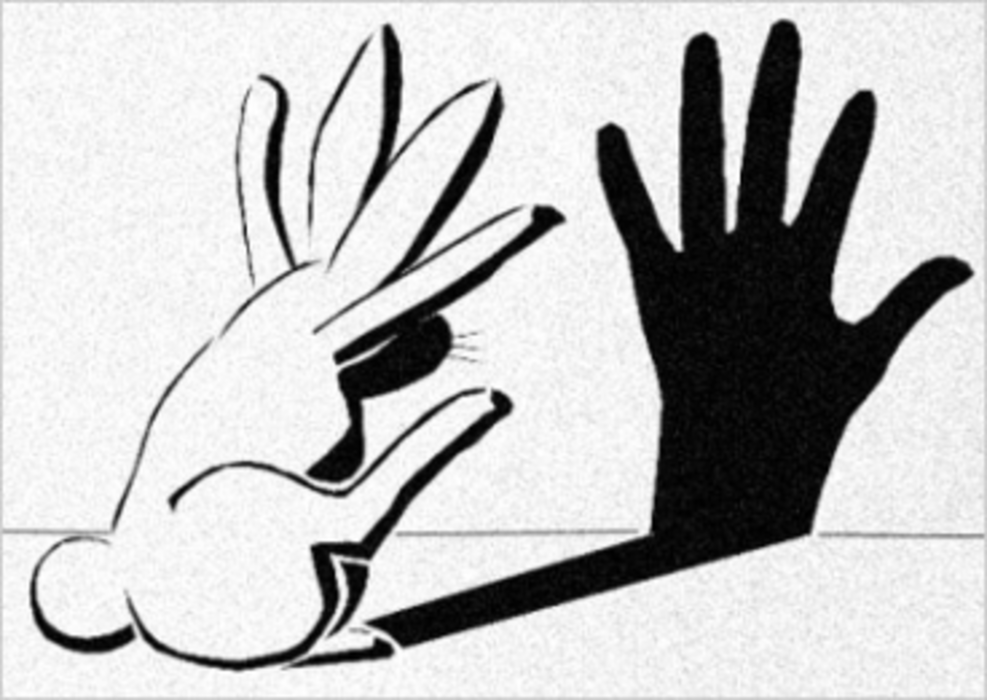The thought came to me as I was remembering a conversation I had about interactive advertising with a traditional ad agency writer. This was at a time when established agencies were running scared that they were becoming dinosaurs. His question was simply, “What is possible with interactive?”
Other thinking this was as a terribly wide open question, my initial response was, “If you agree that your job is to get an audience to believe something then really anything is possible short of creating smells.” Upon further review of that statement years later, I believe that you can even recreate smells.
Of course, recreating smells is not what this is about. This is about tricking the senses through the use of technology, psychology and, in some cases, mathematics and science to make anything seem possible. In my mind, this is a really long way of saying “sleight of hand.”
Now, if you are a magician or illusionist or somebody that has dedicated your life to understanding sleight of hand, turn away. Click on this link or go saw someone in half. This research is based strictly on my observations as a third party. I’m a creative who understands the parallels of sleight of hand and advertising.
That is all.
Ask any creative in the interactive industry and you’ll find they get a real thrill out of pulling off a stunt that makes even their peers scratch their head and wonder how they did it. We’re a lot like illusionists. What the overriding principle boils down to is this: The large motions hide the small motions.
For example, Teller, the silent half of the legendary duo Penn & Teller, explained how to make a business card disappear into thin air in an issue of Wired a couple years back. He explained that the illusion only works if you move your hand from side to side. The brain is trained to believe that when the hand moves from left to right, everything will remain the same. The brain refuses to pay attention to what is happening in between, even if you tell it to. It just won’t. That is why the illusionist will use that area of movement, flip the card back between the fingers, hold the card perpendicularly behind the hand and make it invisible to the viewer. Even knowing all of this, knowing exactly how the trick works to a T, you won’t see it happen. Because the large motion hides the subtle motion and the brain is too set in its ways to process it visually.
So sweet, right? I just ruined a trick for you. It was worth it, though. A) You’ll still never see it happen even now that you know what is happening. B) I needed a good segue into the next statement. The parallels between illusions or magic and digital advertising are quite strong. Using large motions to hide subtle motions and exploiting the brain’s comfort zone are necessary to pull off some cool stuff online.
For example, ClickFireMedia did a project with DeVito/Verdi for Daffy’s 50th anniversary. DeVito/Verdi had the idea to give online users a chance to blow out a birthday candle. Of course, on paper this impossible, but, we can trick the mind into thinking it’s possible. The ad opens and the user sees a candle flickering before them. The copy invites them to blow at the screen to blow the candle out. The user blows at the screen and depending on how hard they blow, the candle flickers until the user blows hard enough and the candle goes out and leave a stream of smoke.
Obviously, the computer isn’t sensing the amount of air being blown at the screen (although I’m sure there is a developer somewhere in the basement of IBM hammering out a USB peripheral that can do just that). The trick was in the microphone. When the user blows at the screen, it makes noise. The harder you blow, the louder you are. When the microphone picks up enough sound, the ad assumes you are blowing harder and puts the candle out. While users are asked at the ad to use their mic at the beginning (for security reasons, you can’t just turn on someone’s mic without informing them), the brain isn’t trained to relate the microphone with blowing. So, the illusion blowing into the screen is actually affecting the flame.
This is just a small example of creating an illusion online. Creatives in this industry have been unknowingly, or maybe knowingly, pulling off illusions for quite a while. The Halo “I Love Bees” campaign and even the Sam Jackson phone call from the Snakes on a Plane website are other good examples of creating an illusion for the sake of advertising.
Of course there is a matter of suspending disbelief. No one goes into a magic show expecting real sorcery or witchcraft. People know it’s a show and want to be entertained. But, like all creatives and illusionists, we revel in trying to pull off something that requires a second look. The second look that causes the user to asks, “How’d they do that?”
And hopefully, if we’ve done it correctly, they won’t figure it out. But even if they do figure it out, our mission was accomplished in using sleight of hand in interactive.
Nick Agderian is a creative director at ClickFireMedia.









